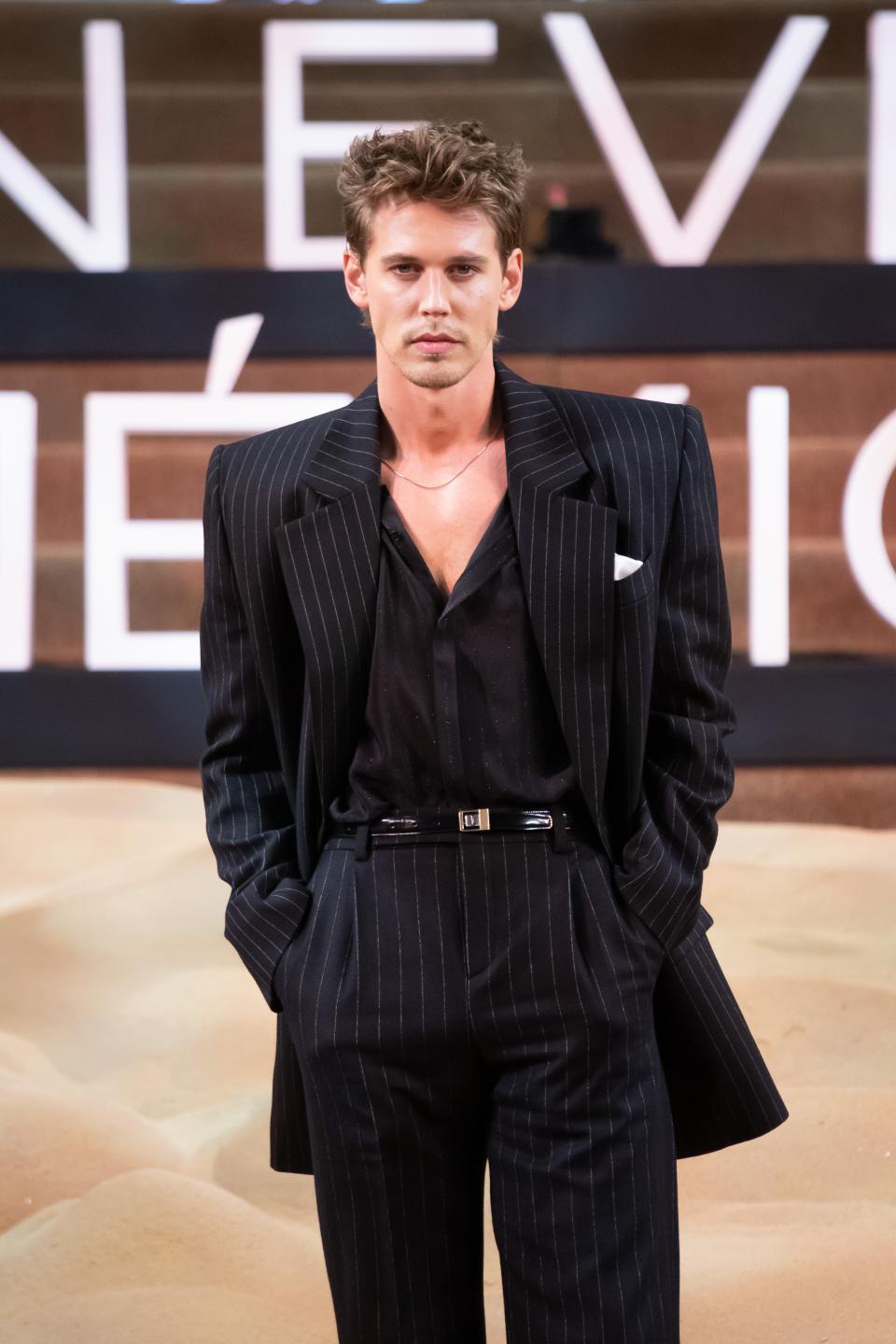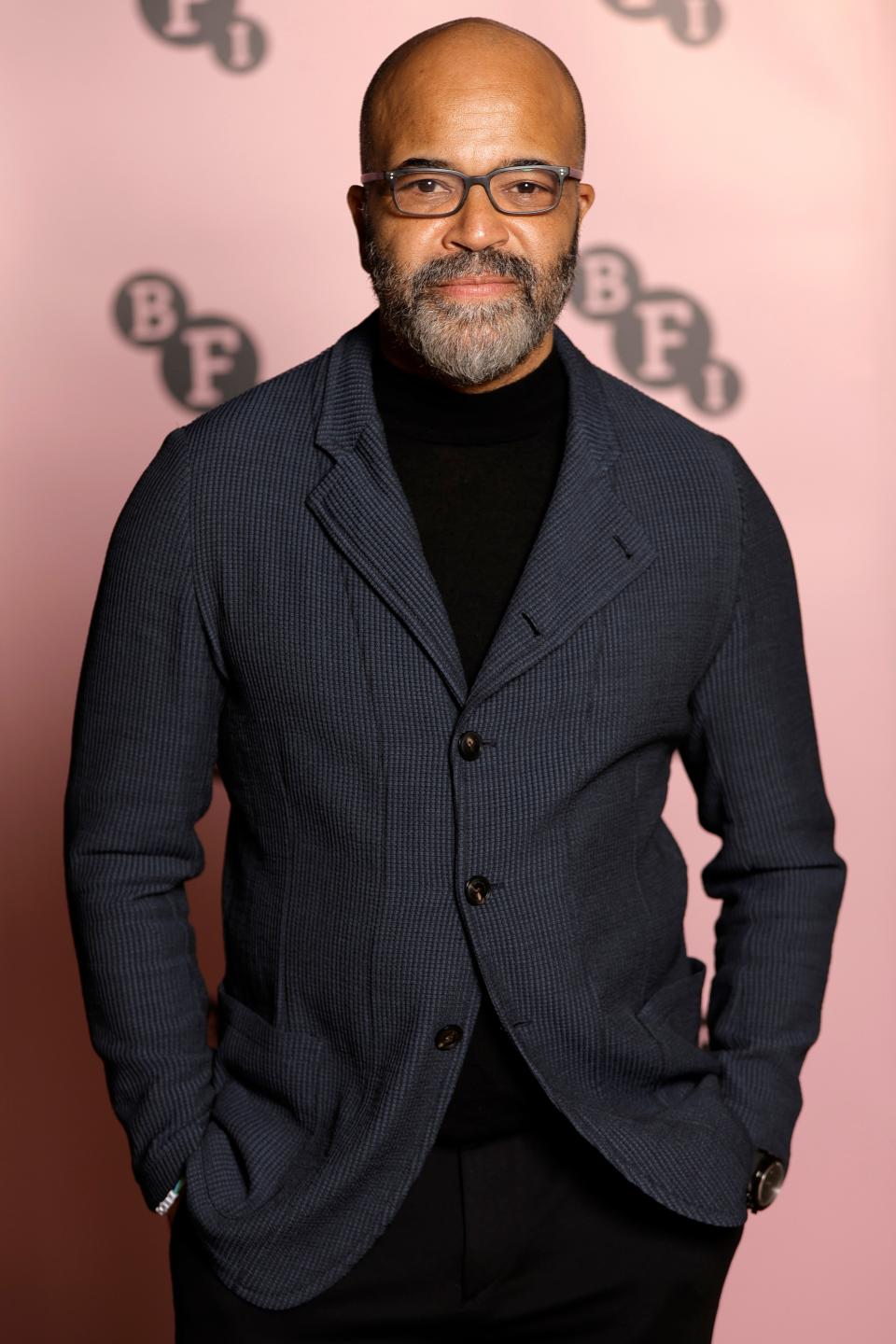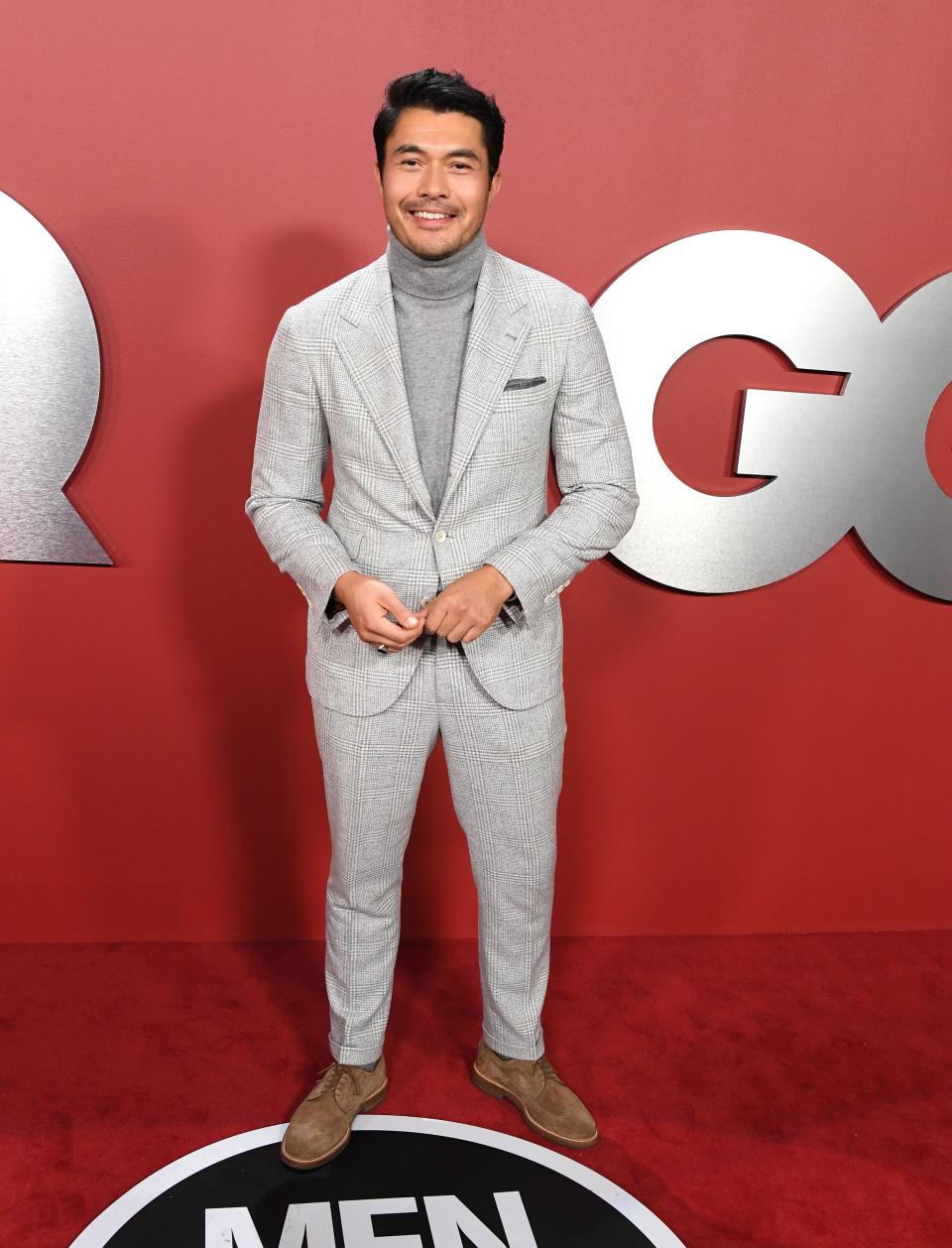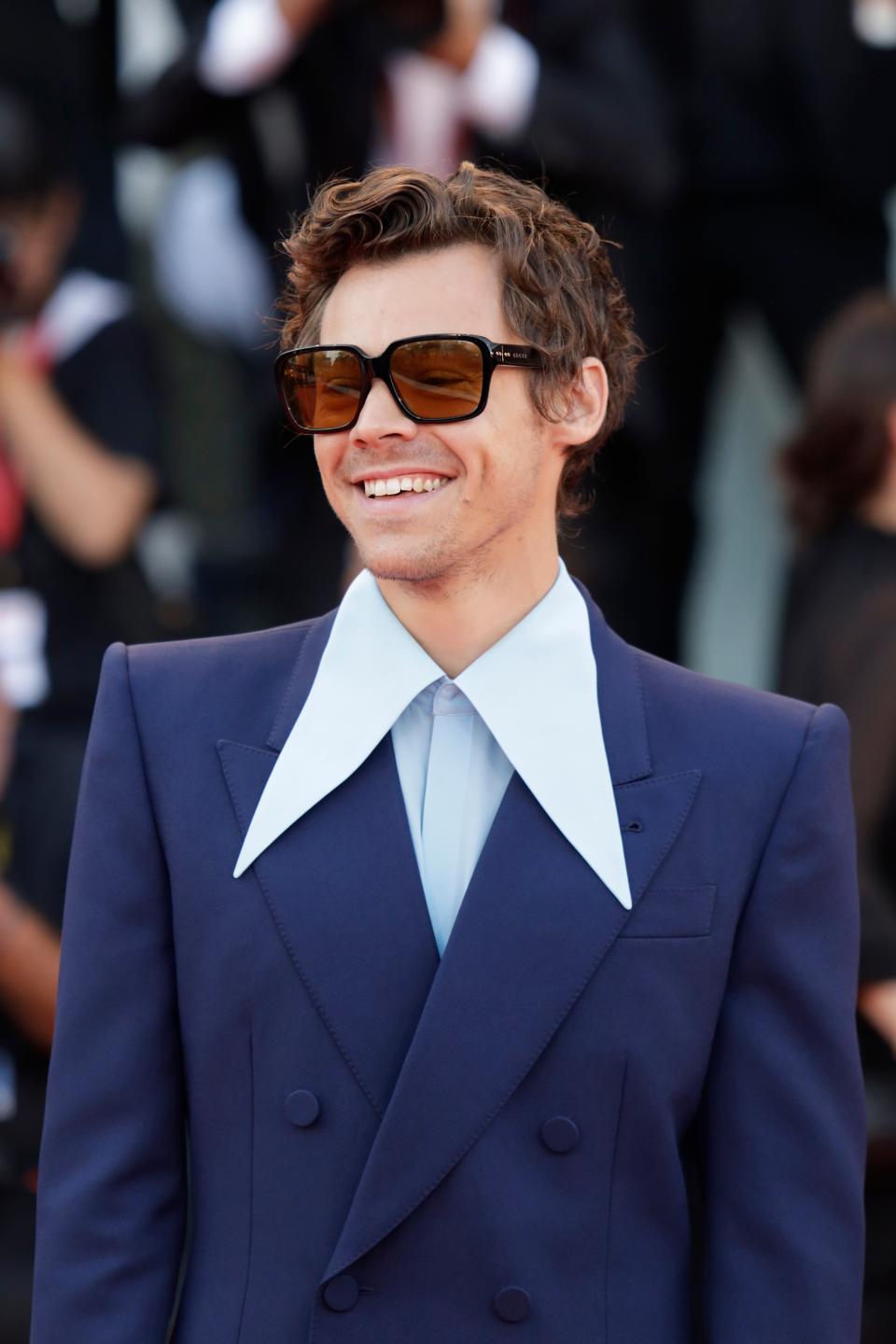This Is the Most Crucial Part of a Suit, According to Tailoring Experts

GQ / Getty Images
Shopping for a suit can feel like learning an entirely new language. You go in looking for a simple two-piece, and you wind up trying to decipher what “half-canvassed” means and wondering whether your jacket should have one vent or two. To help you navigate the ins and outs of the tailoring world, we’ll be exploring each individual aspect of a suit—from the fit to fabric to the pockets—with a little help from the most stylish experts in the sartorial space. Welcome to GQ’s Tailoring 101.
With the exception of the renegade rows and standing dumbbell flys you may or may not get in on arm day, most guys don’t give much thought to their shoulders. Tailors, however, are not like most guys. They think about shoulders a lot. That’s because, of the many elements that go into making a suit look the way it does, nothing (even the lapels) has more impact than the shoulders. If you’ve ever seen someone and thought, Damn, that’s a nice suit, most of what you’re noticing comes down to the invisible architecture of a well-crafted shoulder.
Notch, peak, or shawl? Wide, slim, or somewhere in between? When you're shopping for a suit, those are the first questions you'll need to answer.
“When you look at someone in a jacket, your eyes are first drawn to the shoulders,” says Jake Mueser, the founder of J. Mueser Bespoke in NYC. “You can show someone with the same lapel shape but with different shoulders and the appearance will be massively different.” The reason for this, Mueser explains, has to do with the way a jacket’s shoulders are constructed through layers of internal padding to accentuate or embellish the shape of the wearer’s body and, in so doing, give the suit its overall vibe.
“The shape and the width of the shoulder is what really communicates a physical presence,” adds Mark Cho, co-founder of famed Hong Kong tailoring shop The Armoury. “It helps to frame the head in the same way the right pair of glasses frames the face.” The ways in which it does this are widely varied, from the gentle slope of a soft shoulder—often called a spalla camicia—to the zany concave “pagoda” shoulders favored by Marc Jacobs in recent years.

"Maestro" Headline Gala - 67th BFI London Film Festival

Dune: Part Two - Red Carpet
The other essential element of a shoulder is “roping,” which is the way a shoulder is attached to the sleeve, and whether or not it features a prominent padded ridge at the seam. How (and whether) a shoulder is padded and roped is what makes a jacket look classic or modern, formal or casual, board-room-ready or better suited to sipping Aperol spritzes on a yacht in Portofino.
The look of a shoulder also often depends on where the person who made it was trained, with American, British and Italian tailors each taking unique regional approaches to the task. “If you look at someone in a Kiton jacket that was made in Southern Italy it’s going to have a very different shoulder than something from Savile Row,” explains Mueser. A heavily padded, built-up shoulder with prominent roping (a look that’s synonymous with traditional British tailoring) gives a jacket a more formal, classical feel, while the less padded, natural (ie non-roped) shoulder favored by many Neapolitan tailors, gives it more nonchalance.

"American Fiction" BFI Screening And Q&A

2023 GQ Men Of The Year - Arrivals
If all of this sounds extremely fussy and technical, that’s because it is. A well-crafted shoulder contains multitudes and is more often than not what separates a beautiful suit from a so-so one. You don’t, however, have to know how to hand-stitch a sleeve head to recognize the essential distinctions between a soft Neapolitan shoulder and a structured British one. You just need to know what to look for. “Whether you have the vocabulary to identify a roped shoulder and a two-ply shoulder pad or not,” Mueser says, “You will immediately see the difference.”
Whether you’re having a suit made to measure or buying one off the rack, the type of shoulder you should choose depends on a few things, first, and foremost, how hard you’ve been getting after it on arm day. “If you have sloped shoulders, maybe adding a little bit of structure to your shoulders will add more definition,” says Mueser. “If you have a very athletic build. You might not need to build it up with more padding.”

Premiere Of Disney's "The Lion King" - Red Carpet

Harry Styles
A good tailor will be able to craft a shoulder that flatters your body, but if you’re buying a jacket off-the-rack Cho advises erring on the side of caution. “I always prefer something a little bit broader than the person's actual shoulder, because it just gives your head a little bit more height and your shoulders a little bit more broadness,” he says. “If you are going to buy a natural shoulder, shoot a little bit on the side of too wide rather than too narrow.”
Aside from how you’re built, the other important consideration is how and where you’re planning to wear it. “A softer, less-structured shoulder lends itself to a more casual look that’s at home with a polo, a sweater or jeans. It’s a jacket that feels less like armor and more like something that you can just kind of throw on,” Mueser says. “The more structured, roped shoulders lend themselves more to a more dressed-up and conservative look, and we recommend this for almost all evening wear.”
Whatever you choose—especially if you’re buying off-the-rack—make sure you get the shoulders right the first time, because having them altered afterwards isn’t really an option. “I would never advise anyone to alter a shoulder with an alterations tailor,” Cho says. “It's a very complicated operation and more often than not it's just not going to work out well.”
Originally Appeared on GQ
More Great Style Stories From GQ
How Vintage Clothing Became the Hottest Thing in Fashion
Robert Pattinson Is Dressing for the Role of a Lifetime: Fatherhood
Paul Mescal Is the Undisputed Champ of Freaky, Cropped Gymwear
First Look: Tyler, The Creator Designed a Capsule Collection for Pharrell’s Louis Vuitton
Not a subscriber? Join GQ to receive full access to GQ.com.
Nike Is Dropping an Outrageous Air Force 1 to Celebrate the Year of the Dragon


